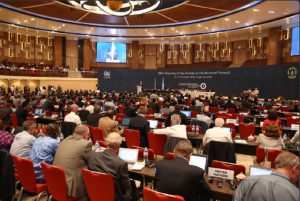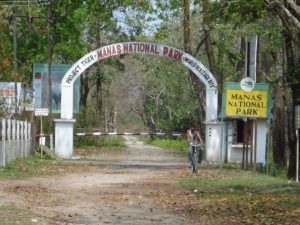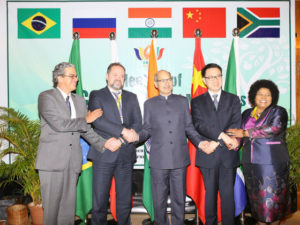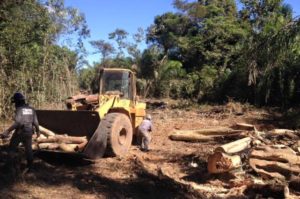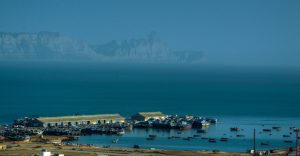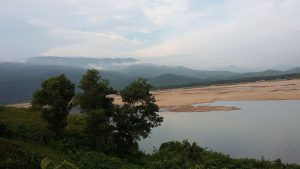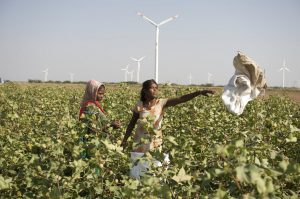Hot on the heels of Colombian president Juan Manuel Santos’ narrow defeat in a public referendum on a peace agreement with guerrilla group the Revolutionary Armed Forces of Colombia (FARC), Chinese foreign minister Wang Yi arrived in Colombia this weekend as part of an official trip that will also take in Bolivia, Peru, and Ecuador. Wang congratulated Santos on his award Friday of the Nobel Peace Prize in recognition of his efforts towards ending conflict with the FARC. Wang also reiterated China’s support for the peace process following the rejection of a proposed settlement by a 50.2% vote share on October 2. Only 37.4% of Colombia’s 34.9 million-strong electorate turned to vote on the peace deal, which took four years to negotiate. The treaty needed only a 13% share of the total possible vote to be ratified after President Santos ascertained a ruling from the Supreme Court to reduce the number from an initial 50%, arguing that Colombians tend to abstain from voting. But the victory of the ‘No’ vote could negatively impact Colombia’s future economic prosperity as Chinese and other foreign investors may continue to overlook it as a market and instead favour more “forward-looking” economies, according to Benjamin Creutzfeldt, an expert in China-Latin America-US Affairs at SAIS Foreign Policy Institute. China and Colombia Wang’s Colombia visit fits with Beijing’s broader Latin America strategy, which aims to diversify its loan portfolio and the activities of its State-owned Enterprises (SoE) away from risky partner countries like Venezuela, Creutzfeldt said. However, Chinese companies operating in the region increasingly make strategic decisions independently of government direction. “Wang’s visit will do little to drag Colombia up to par with the other three Pacific Alliance members [Mexico, Chile and Peru] in terms of commercial relations with China,” Creutzfeldt said, but suggested that it shows Colombian decision-makers that Beijing is a willing partner if it receives the right signals in the future. In pursuit of peace The government, opposition, and guerrilla leaders are now seeking a resolution that will stop FARC members from returning to violent action. The FARC has said it will pursue its agenda by peaceful political means. According to other analysts consulted by Diálogo Chino, Colombians still want peace but rejected the agreement for three main reasons: Insufficient punishment for guerrillas’ crimes; the provision of financial aid to the FARC for a period of two years; and ten guaranteed seats for the FARC in both houses of the Colombian legislature, even if candidates of the group’s political wing do not obtain the votes normally required. Wang is now likely to hear two possible scenarios in Colombia. Either the FARC guerrillas will go to hiding in the mountains and regroup, or they will find themselves usurped by their own dissidents and rival guerrilla group the Marxist National Liberation Front (FLN). This is Colombia’s fourth attempt to end the civil war. Over 52 years, war with the FARC has left 250,000 dead, led to 45,000 disappearances and 8,000,000 displaced. It is estimated that 60% of Colombia’s territory contains land mines which over the past 25 years have killed or injured no fewer than 11,000 people. Some 40% of victims are thought to be innocent of any involvement in the conflict. The peace agreement stated that the 9,000 guerrillas would help locate these land mines following the establishment of 20 ‘security zones’. Within these zones, FARC members were supposed to deliver their 20,000 weapons within 180 days and confess their crimes. A special jury would rule on cases of crimes against humanity, including murder, kidnapping, torture, rape and recruitment of minors. According to Jose Miguel Vivanco, director of the NGO Human Rights Watch: “Among other serious flaws, the agreement makes it easier for army generals and FARC commanders to flee from responsibility for the crimes committed by their subordinates, allows convicted war criminals to serve their sentences while they hold elected office, and includes modest alternative sanctions (which look more like community service) for guerrillas who confess their crimes quickly and completely.” Monthly Payments The agreement also stipulated that anyone without a pending legal case could begin to leave the security zones. They would then receive 90% of the minimum wage from the state, as well as a bonus of US$ 2,800 if they participated in activities that served as reparations to victims, such as helping to locate and deactivate land mines and rebuilding roads and schools. Opponents of the agreement took exception to this clause saying that since the FARC had turned to drug trafficking it should have enough money not only to support its members but also to indemnify the 8 million victims of the conflict. Under the agreement, victims would receive financial compensation from the government and assistance re-entering the labour market. The same would apply to relatives of those who were killed or are missing, those injured by mines and combat, those affected by the abuse of military power, and the internally displaced. Many of those who were forced to leave their land because they would not or could not pay kickbacks to the FARC and/or right-wing paramilitary groups also involved in the conflict want to return to their land. Furthermore, they want compensation for being forced to live in subhuman conditions for years in the outskirts of Colombia’s cities. The opposition to the peace deal is led by former president Álvaro Uribe, who fiercely battled FARC and is credited with depleting its numbers by half. Uribe’s group accuses the current government of colluding in the illicit cocaine trade after it suspended the fumigation of coca leaf plantations, which involved use of the carcinogenic pesticide glyphosate. Santos defended himself saying that the World Health Organisation (WHO) are other environmental groups had acknowledged the pesticide’s risks to human health. According to the United Nations (UN) cocaine production in Colmbia has increased from 442 to 646 tonnes since 2015. Farming of the coca leaf, the ingredient which is processed to make cocaine but which also has other uses, has grown by 39%. Colombia has regained its status as the top producer of coca leaves with 96,000 hectares devoted to its cultivation, outperforming Peru and Bolivia as well as its own historic 2014 high of 69,000 hectares. Since the decline of drug cartels in the 90s, both the FARC and the National Liberation Army (ELN) control the cultivation, refining, and trafficking of the drug, along with the so-called Bacrim (Bandas Criminales comprised of former paramilitaries, ex-guerrillas and drug traffickers). This article was updated on October 9.
